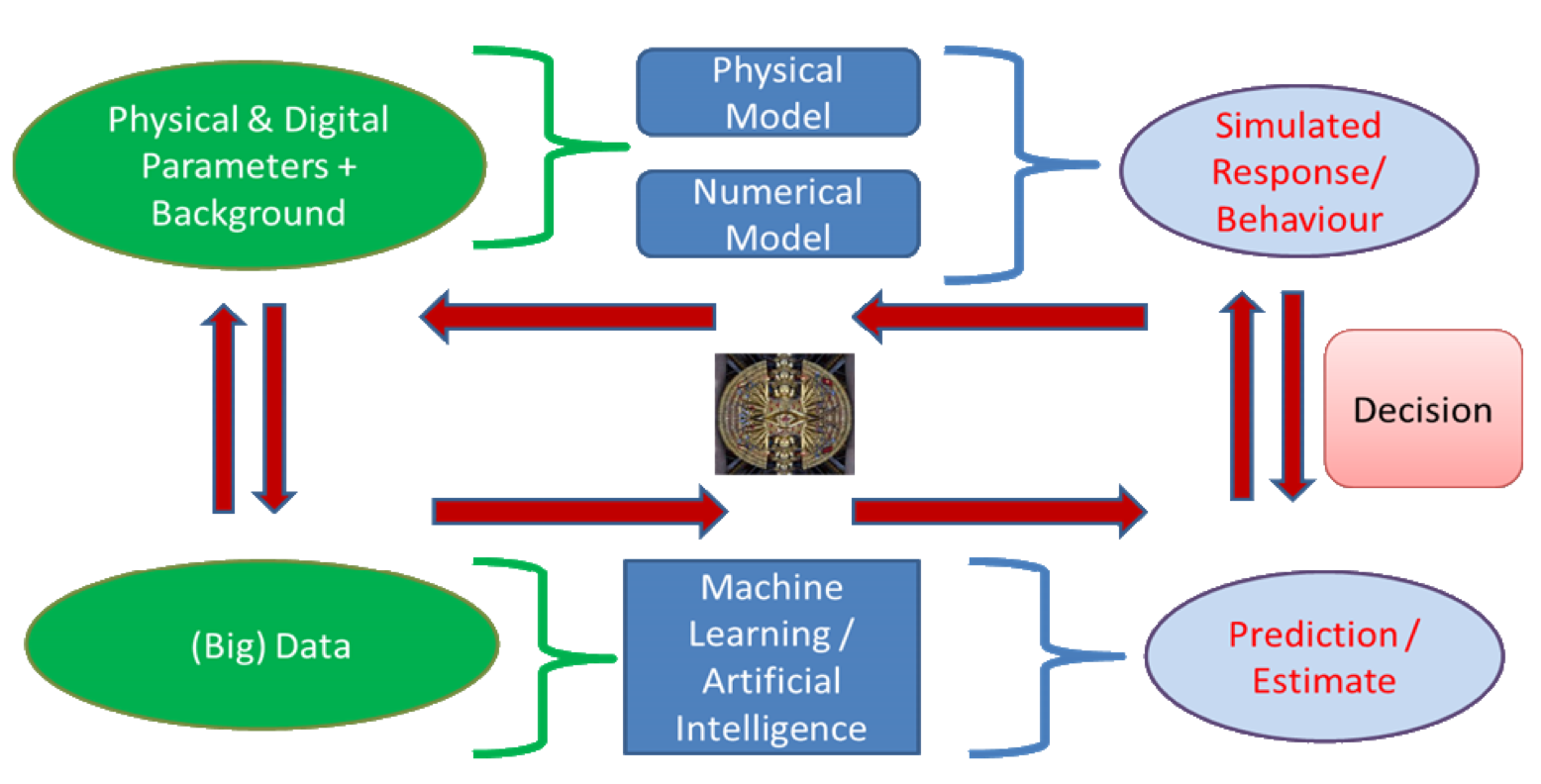
The comparison of models is a powerful lever when analysing phenomena that we seek to represent, and to best represent them according to an optimized criteria. This includes comparison of the implementation conditions of the algorithms. Moreover, the inability to compare models, for various reasons, often indicates a lack of reproducibility of the work, and thus, finally, the limited quality of the results obtained.
Beyond comparison, the combination of models, or methods, can result in a synergistic effect. This is the case for the combination of cyberphysical and statistical modelling. Such a combination makes it possible to have an overall representation allowing decisions that are themselves optimized.
While cyberphysical modelling cannot be solved alone, the statistical model clarifies or qualifies physical parameters. While on the other hand, data is not, at least initially, sufficient to obtain efficient learning, and the cyberphysical model compensates for this. Each approach reinforces the other and thus also the ensemble.
